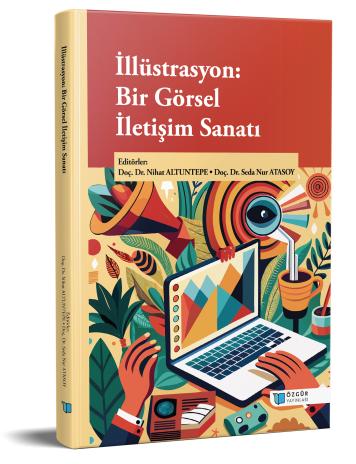
Müze Deneyiminde İllüstrasyonun Yeri: Tarihi ve Kültürel Anlatıları Görselleştirmek
Şu kitabın bölümü:
Altuntepe,
N.
&
Atasoy,
S.
N.
(eds.)
2024.
İllüstrasyon: Bir Görsel İletişim Sanatı.
Özet
İllüstrasyonlar, müzelerin ziyaretçileriyle daha güçlü bir bağ kurmalarına olanak tanıyan önemli görsel ve tasarımsal araçlardır. Müzelerde kullanılan illüstrasyonlar, ziyaretçilerin deneyimlerini zenginleştirmek ve öğrenme süreçlerini desteklemek amacıyla farklı işlevler taşımaktadır. Bilgilendirici, etkileşimli, hikâye anlatıcı ve yönlendirici olmak üzere dört ana başlık altında ele alınmaktadır. Bilgilendirici ve yönlendirici illüstrasyonlar, hemen hemen her müzede bulunan bilgi sunma ve rehberlik sağlama işlevi gören illüstrasyonlar olarak büyük bir önem taşımaktadır. Hikâye anlatıcı ve etkileşimli illüstrasyonlar, genellikle müze türüne ve ihtiyaçlarına bağlı olarak kullanılmakla birlikte, yenilikçi ve güncel yaklaşımları benimseyen müzelerde ziyaretçilere derinlemesine bir deneyim sunmak amacıyla da tercih edilmektedir. Böylece illüstrasyonlar, yalnızca görsel bir öğe olmaktan öte, ziyaretçi ile müze arasında çok yönlü bir etkileşim ağı oluşturmaktadır.
İlk olarak, illüstrasyonların müzedeki rolleri açıklanmaya çalışılmıştır. Tarih ve kültür anlatımında illüstrasyon kullanımının üzerinde durulmuş müze deneyimine katkısı vurgulanmıştır. Mitolojik ve kültürel hikâyeler illüstrasyonlarla desteklendiğinde daha zengin, daha somut ve etkileyici bir anlatım sunduğu belirlenmiştir. Bu bağlamda, illüstrasyonların hem görsel iletişim unsurlarını hem de eğitici içerikleri bir araya getiren bir araç olarak tasarlanması önem taşımaktadır. Müze deneyimini destekleyici illüstrasyonlar (rehber kitaplar, etkinlik materyalleri, kat planları, broşürler vb.) müze ziyareti süreçlerini eğlenceli bir deneyime dönüştürmektedir. Bunun yanı sıra, illüstrasyonlar yalnızca görsel zenginlik sunmakla kalmayıp, ziyaretçilerin tarihsel ve kültürel anlatılara daha derinlemesine katılımını sağlamaktadır. Bu durum, müzelerin bir öğrenme ve kültürel aktarım alanı olma misyonunu güçlendirmektedir. İllüstrasyonlar, müzelerin eğitim hedeflerini destekleyen, ziyaretçi etkileşimini artıran ve kültürel içerikleri daha etkili bir şekilde sunan vazgeçilmez araçlardır.

